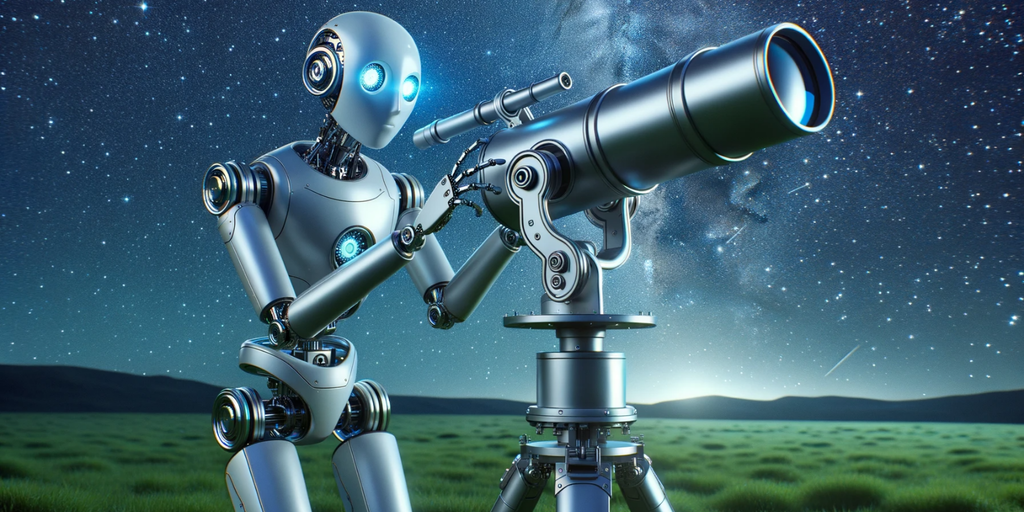What would Gailleo do?
A group of scientists and astronomers have successfully used artificial intelligence and machine learning to identify and classify a supernova as it happened. It was a test of the Bright Transient Survey (BTS) bot project, part of a broader program that observes and classifies supernovae exceeding a specific brightness level.
The team behind BTSbot said it could cut the human middleman out of confirming whether a detected event was an exploding star, giving researchers more time to analyze the heavenly event. The bot launched last week and was helmed by students and faculty at the private research Northwestern University.
“This represents an important step forward as further refinement of models will allow the robots to isolate specific subtypes of stellar explosions,” Northwestern University assistant professor Adam Miller said. “Ultimately, removing humans from the loop provides more time for the research team to analyze their observations and develop new hypotheses to explain the origin of the cosmic explosions that we observe.”
Some people have voiced concerns about being replaced by AI and resisted the idea of removing the “human middleman,” but Miller said the goal is efficiency.
“We’ve been doing this since about 2018 when this program first started,” project co-lead and astronomy graduate student Nabeel Rehemtulla told Decrypt. “So we now have tens of thousands of supernovae, which we can train and build the model on and automate this process.”
The Horsehead nebula can be seen in this “first-light” image from the Palomar Observatory in California. Image: Caltech Optical Observatories
A supernova is the explosion of a star that releases massive amounts of energy, outshining an entire galaxy briefly. It occurs when a star exhausts the nuclear fuel at its core, leading to a catastrophic collapse.
Based at the Palomar Observatory in San Diego, Calif., and named after astronomer Fritz Zwicky, the Zwicky Transient Facility (ZTF) was founded in 2018 to rapidly identify these cosmic events.
Led by Rehemtulla and Miller, the BTSbot project team included members from Northwestern University, the University of Technology at California, Liverpool John Moores University, and the University of Minnesota.
In training the AI model, Rehemtulla fed the algorithm more than 1.4 million historical images from 16,000 sources. These sources included confirmed supernovae, temporarily flaring stars, periodically variable stars, and flaring galaxies.
There are approximately 1,300 to 1,400 supernovae per year, Rehemtulla explained, generating a significant volume of data to analyze. The Transient in Bright Transient Survey, he said, measures anything that comes and goes, brightens and dims, and is a one-time event.
“Giving the model a clean and representative training set is really important,” Rehemtulla said. “So what we started with was going back to see which supernovae or which other things passed the BTS filter initially.”
By doing this, Rehemtulla explained, it’s easy to rule out celestial occurrences that are not supernovae.
A new, composite image of the Andromeda galaxy made by combining three bands of visible light captured at Palomar Observatory. Imaget: ZTF/D. Goldstein and R. Hurt (Caltech)
The BTSbot is integrated into the observing portal, making the scores the model produces visible to astronomers so they can easily see what the model is doing. Researchers at Caltech, worked on the integration, Rehemtulla added, ensuring that once a request was sent from the AI, a duplicate request wasn’t sent by a human.
“So we can go back and look at the 50 things from every night in the past five, six years. And those are the samples that we use for the training set,” he said. “Basically anything that a human has vetted in the past five or six years.”
While a success, Rehemtulla said the project has not been without its hurdles, primarily regarding vetting and checking the images and making sure they are of high quality, causing brief delays in the launch of the BTSbot.
“There were a lot of things that delayed development, one of which was building a big enough training set that the model can learn off of, but keeping it clean,” he said. “You don’t want to just throw in everything our telescope ever detected and start getting a bunch of junk in there.”
As artificial intelligence becomes more ubiquitous, the technology is finding its way into several fields of study, including cancer treatment, military defense, and education. As promising as AI is for the future of society, experts warn that the technology continues to exhibit several troubling habits, including biases, racism, and lying.
Rehemtulla also expressed the need for caution when using artificial intelligence in astronomy, and acknowledged the potential for selection biases to form in the AI model, which would threaten the continued accuracy of AI models in identifying celestial bodies in other galaxies.
“We find more than 99% of them, so actually we’re not too worried about that,” he said. “Something that people who adopt AI for astronomy need to be thinking about is, what kind of biases are we putting into [the] research?”
Stay on top of crypto news, get daily updates in your inbox.
Source: https://decrypt.co/201899/ai-takes-the-helm-in-supernova-classification




